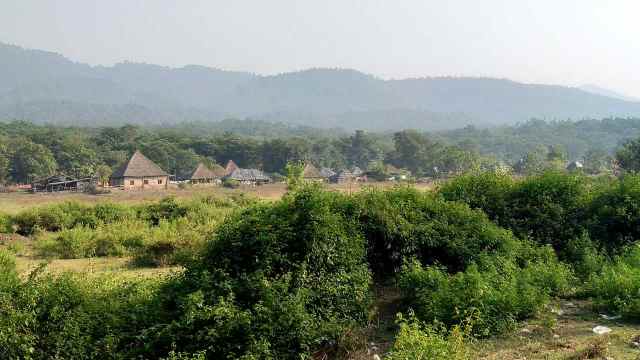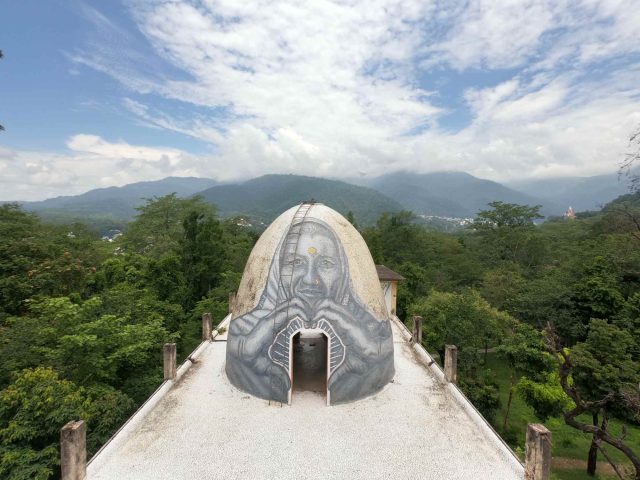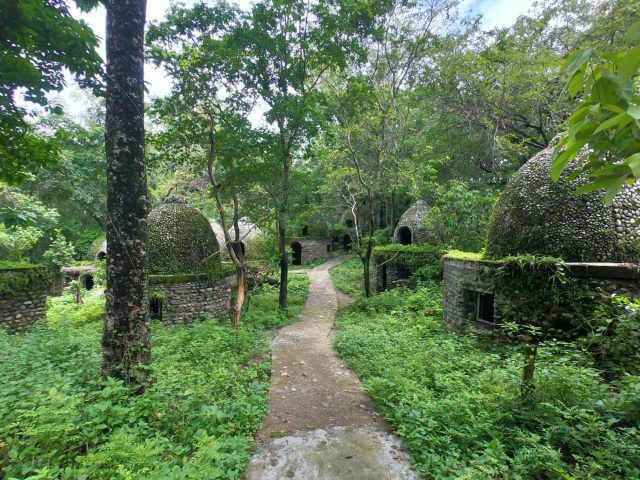Road to Rishikesh
They say, that the journey is more important than the destination ….. and once you have driven from Gurgaon to Rishikesh in a Caravan, you will experience first-hand how true this is!
We started our day at 6 am from Gurgaon and quickly settled on board the brand-new Caravan we had just rented from RV On. The Caravan was loaded with creature comforts to spoil us no end- comfortable beds, sparkling clean washroom, well-stocked pantry and smart TV with additional road-view camera, and the works; but we shall leave the details for another time, or even better, you should experience those first-hand for yourself sometime. This piece is about the weekend road trip to Rishikesh and how even after having travelled to Rishikesh many times before, this one really opened our eyes to so many things we hadn’t experienced before.
This time around, we were advised by the RV On team to take the upper-Ganga Canal Road which guarantees a stress-free ride and amazing country-side views on a superb road. One has to take a left turn from Muradnagar bridge (aka Chhotta Haridwar) and go alongside a beautiful canal which originates from the holy Ganges in the upper Himalayas. It’s a two-lane road with no dividers, so one has to be careful, but the traffic intensity is much less than what one would get on a highway. The average speed on this road is about a safe fifty to sixty kilometres per hour in the Caravan.
Along the way, you’ll come across spots where you might want to pull over and stretch your legs -those are the perks of a road trip in a Caravan! We pulled over at a place called Jolly after about an hour’s drive along the canal. Jolly has one of the few old bridges from British era and offers an opportunity to dip your feet in the holy Ganges and sit and relax for a while. Our Caravan crew served us piping hot tea while we soaked the early morning sun. Enroute, are also some jaggery (popularly known as “gurh/kolho”) makers who use age-old traditional methods to make jaggery from sugarcane. One can stop and see the process first-hand; it’s nothing very flashy but it definitely evokes a sense of the north-Indian countryside living and has a novelty factor of seeing “oh, this is where it comes from”! Taking a slight detour on the way is a rare sight – a cultivated Lotus farm; one can see the Lotus bloom here almost all year round. It’s truly a picturesque and a rare sight for us city dwellers. As one chugs along the canal, you can see two humungous lion statues on either side of the canal, built as a tribute to India’s highest ranking military official in the British Army when they ruled over India, Captain Chattar Singh, who was honoured for planning and execution of the Upper Ganga Canal as it stands today. About 5 km ahead on a slight detour, one reaches Piran Kaliyar, the Dargah of Hazrat Makhdum Allauddin Ali Ahamed Sabir on the outskirts of Roorkee town. The Dargah is the site for one of India’s largest Sufi music festivals during the Urs in October/November. This place is also famed for its mystical powers that fulfil the desires of the devout; mind you, you may also come across some devotees sitting or lying down chained to the beds along the way, since it is believed that they are “possessed” – so travellers must use discretion while visiting this place.
Thereafter, one can take the Roorkee bye-pass, via Chandimandir road leading to Chilla dam. Along the way you will have to drive through a shallow river crossing the road; nothing to sweat even if you are in a sedan or even a motorbike and it definitely does make a good photo-op! A new GMVN Tourist Rest House, has come up right adjacent to the Chilla dam which not only offers great location to stay but the cottages are immaculately furnished by Uttrakhand Tourism Development Board. One must stop here, even if only for a light snack or a wholesome lunch.
The drive ahead to Rishikesh is pristine – with a cleaner Ganges flowing through the canal on the right and a lot of green pastures on the left. The area is part of Rajaji Tiger Reserve National Park, and if you are lucky, then you might see some wild animals like deer, elephants etc near-by or crossing the road. The pastures are dotted with abodes of a special community, called the Van Gujjars. They are one of India’s unique nomadic tribe who live in synch with nature and are strict vegetarians. They depend heavily on land and cattle for sustenance. Van Gujjars believe in forestation and have sound knowledge of the local flora and fauna. On occasions like birthdays or weddings, they plant trees and look after these even in the future. They also have some quirky traditions – they revere milk like no one else! Milk is considered a symbol of prosperity and is served as a welcome drink to their guests; it is also a test of manliness where a bridegroom is supposed to finish a pot-full in one gulp at the time of the wedding ceremony. Another unique tradition is that the whole village does all the work for the wedding and the parents of both the bride and the bride-groom are actually invited and welcomed as guests! Women folk are highly respected in this community and treated more equal than in the “civilised” world – we can take a leaf or two out of their book.
About 20km ahead we enter Rishikesh from the right side of the Ganges and the first stop is the Beatles Ashram (aka Churaasi Kuttiya). It was a founded as an International Academy of Meditation by Maharishi Mahesh Yogi in 1960s and is spread in a campus of over 7.5 hectares. After the Rajaji Tiger Reserve National Park declared the entire area around Rishikesh as a reserve forest, the Ashram was shut and made part of the reserve. However, till today the structures stand, albeit run down, and the site is being run as a tourist place for a nominal entrance fee. The campus has some very beautiful paintings which adorn the buildings, roofs and walls all around – not to forget the sign boards reminding us that the Beatles spent 3 months there in 1968. This is a must visit place to take a walk down memory lane.
Quite close by is the historic Lakshman jhoola, with the holy Ganges flowing beneath it. A walk in the local market nearby immerses one in the rich traditions and beliefs of Hinduism. The streets are dotted with shops selling trinklets, flea market stuff and not to forget the now “permanent” foreigners who have made Rishikesh their home.
After a short stop over on the bank of Ganges, we headed to our destination for the day in Brahmpuri. The road was laced with even more tell tales signs of Hindu mythology – Garud Chatti temple (where it is believed that Lord Vishnu rested before proceeding to Neelkanth Temple) and then about 15 km ahead to Neelkanth Temple, the place from where the annual Kaanwar Yatra starts in the monsoons.
Imagine this was just day 1, the ride to Rishikesh! Rishikesh in itself has loads to offer for a good 3 to 4 days stay – to satiate your spiritual calling attend the “Parmarth Aarti”, invoke fitness through Yoga, bring out the adventurer in you while rafting or trekking to Patna or Neer waterfalls and not to forget enjoy Carvanning by the river side!
PS:
Yes, the journey is more important than the destination…. but you know what is even more important? The people you travel with 🙂 So go ahead and reimagine road trips with your loved ones!




